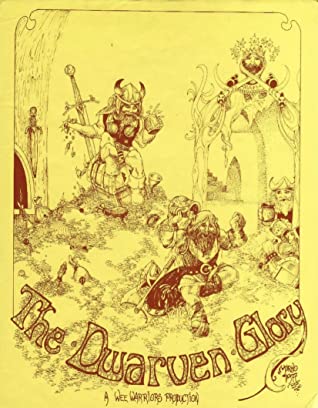In my A Game Per Year project, my goal has been to read one roleplaying game corebook for every year they’ve been published. However, I soon started to feel that it was hard to decipher how the games were really meant to be played. For this reason, I decided to start a parallel project, An Adventure Per Year, to read one roleplaying adventure for each year they’ve been published.

Dungeons & Dragons may have been the first roleplaying game but the first separately published roleplaying adventure was Palace of the Vampire Queen in 1976. The Dwarven Glory is the follow-up to that adventure from the small publisher Wee Warriors. It too is compatible with D&D but the tone is more whimsical. It takes the world of the game less seriously than D&D has pretty much always done.
The concept of The Dwarven Glory is one of those classic fantasy adventure ideas that keeps repeating and repeating in roleplaying publications. An underground dwarf realm has been overrun by monsters, this time the war leader Mortoc and his ten orc tribes. The player characters can go in to kill the orcs and other creatures.
The tone of the adventure varies between evil dwarf priests who present an opportunity for a social encounter and topless dwarf go-go dancers, featured in the remains of the ruined entertainment district. Although the adventure is mostly a funhouse dungeon where the goal is to search new areas and see what kind of weird things pop up, there’s some attempt at a dungeon ecology and narrative links between spaces.
For example, the dwarf priests try to get the characters to escort them to another area so they can perform a fell rite.
As is traditional with this concept, some parts of the dungeon have been left unexplored by the orcs and contain new surprises such as a quest-giving lich.
The interest in The Dwarven Glory is not so much in the adventure itself but the fact that it provides the earliest known example of a concept that has been common in the years since.